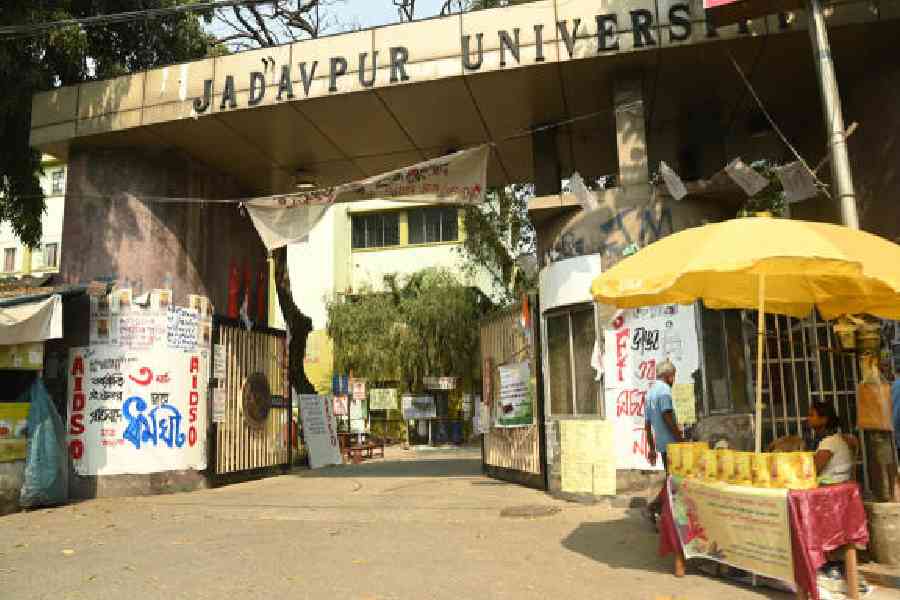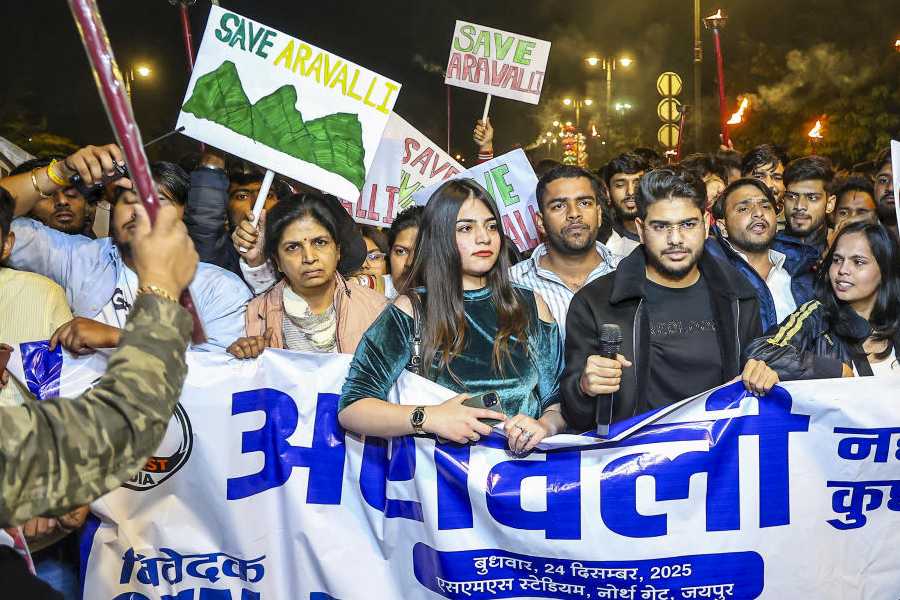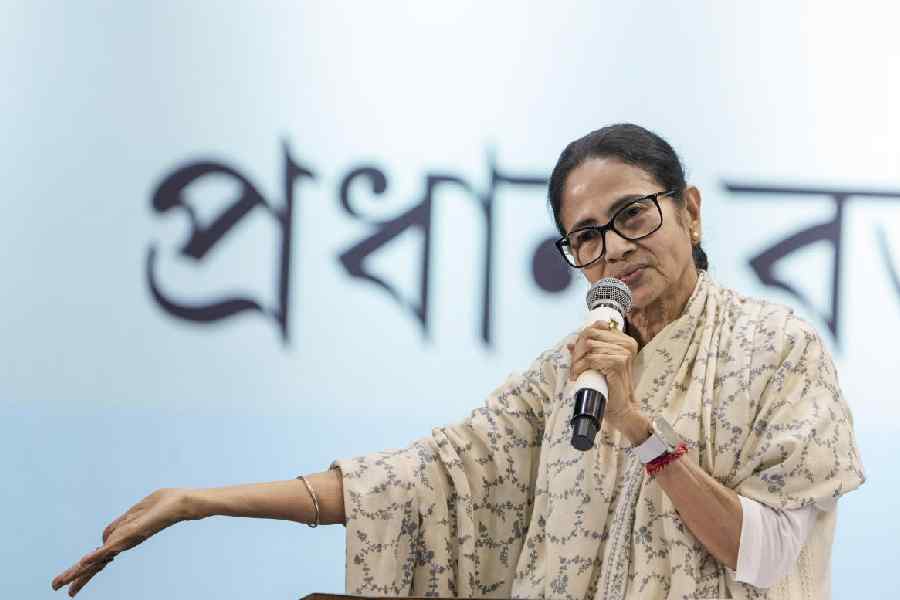 |
 |
Deepender Singh Hooda, Congress MP: Hum aapko chaubees inch ka aloo paida karke de denge (We will grow 24-inch potatoes and give them to you).
Sushma Swaraj, BJP MP: Unhone McDonald’s ko daawat de dali ki hum chaubees inch ka aloo yani do foot ka aloo uga kar unhein denge. Woh kehte hain ki main kisan ka beta hoon. Arrey beta, kisan ke bete ho, lauki aur aloo ka antar to samajh lo! (He has promised McDonald’s that 24-inch or 2-foot potato can be grown and given. He says he is the son of a farmer. Son, if you are a farmer’s son, at least understand the difference between bottle gourd and potato!)
Years after Lalu Prasad hoisted the potato into the national political lexicon, declaring jab tak rahega samose mein aloo, tab tak rahega Bihar mein Lalu, the tuber caused much mirth in India’s most hallowed house on Wednesday.
The young Deepender and the stinging Sushma were stirring the pot for public consumption in the Lok Sabha but neither did full justice to the potato that has become one of the best symbols of lion-hearted India’s ability to cope with a foreign invader.
Sushma started the skin-peeling exercise by claiming that multinationals find Indian potatoes too small for fries and hence ship them from abroad.
Sprinkle some salt before munching on Sushma’s fries.
“I think both (leaders) would have been helped by lessons about potatoes,” said Suman Kumar Pandey, former director of the the Central Potato Research Institute in Shimla which has since the 1990s released at least three potato varieties for chips and one for fries.
Pandey and other agricultural scientists point out that farmers in some central Indian states have for years been cultivating and supplying potatoes suitable for processing into French fries or chips.
The leader of the potato pack is Gujarat, whose chief minister Narendra Modi was recently declared fit to be Prime Minister by Sushma. Another notable is Bengal, whose two principal and seemingly irreconcilable political formations supped together yesterday.
Potato is a staple for most of India and is often taken for granted. But the science of potato is far more fascinating than, say, a round of potato-peeling — often a dreaded form of punishment in some boys’ hostels and army barracks.
Its bloodline is also more sophisticated than the table variety that goes into the pots and pans in kitchens. Fries and chips are made from a variety called processed grade.
In fact, Gujarat has emerged as the largest producer of processed grade potato in India, followed by Madhya Pradesh. It is just a coincidence that both are ruled by the BJP — a more decisive factor is the abundance of sunshine which is the lifeblood of potatoes meant for fries.
Bengal’s higher level of groundwater means the state is more suited for the chip variety. Besides, since French fries need elongated or oblong potatoes, they need to be grown for longer duration (120-130 days), according to industry sources. Bengal farmers tend to confine potato cultivation to 90 days to ensure that they do not miss out on other crops. Hence, the circular ones, which fit the chips bill more, are harvested in Bengal.
 |
But the most important reason for the Bengal focus on the chip variety is the presence of Pepsi, which has brought expertise to fields operated by its partner farmers. Since Pepsi focuses on chips, the farmers produce that variety.
“French fries and chips demand potatoes with special features,” said Pandey, who has spent nearly 40 years in potato research. Sushmaji and Hoodaji, please note — that is how long it takes to build expertise.
“They need to be about eight inches long, have higher dry matter content and contain low sugar levels,” Pandey added. A 24-inch potato Hooda has vowed to grow — perhaps in jest — will be a freak.
“The higher the dry matter, the lower the absorption of oil,” Pandey told The Telegraph. “And the lower the sugar content, the better the appearance of fries or chips. High sugar turns them brown or dark brown, with low sugar they are white or yellow.”
Now Sushma knows why the fries look so fetching, FDI or no FDI.
Potato sizes vary according to the variety, environmental conditions, and the nutrients available to the plants during growth.
Pandey said the dry matter content of potatoes widely grown in the northern states is about 22 per cent, while food-processing companies seek potatoes that have at least 24 per cent dry matter. This will mean that some states are better suited than Hooda’s Haryana to grow the fry variety.
The sugar levels of such potatoes intended for processing should be about 1 per cent rather than 2 per cent found in most potatoes.
Unlike FDI opponents and supporters who keep switching sides depending on which side of the government they are on, potatoes have found harmony in India without forgetting their roots.
They have adapted to Indian climatic conditions since their introduction into India during the early 17th century, said Joginder Singh Minhas, principal scientist at the Central Potato Research Station (CPRI) in Jalandhar.
The Portuguese brought potatoes to India’s west coast where they are still called batatas, while British traders independently brought them into Bengal, according to B.D. Sharma, a potato researcher who has documented the history of potatoes in the country.
The earliest potatoes brought into India have given way to new varieties generated through breeding efforts. Scientists at the CPRI have since the 1950s released nearly 50 varieties of potatoes through breeding and selection for commercial cultivation, said Minhas.
Why all this potato purana? Both Sushma and Hooda should think twice before trifling with the spud missile. Within two years of Lalu Prasad making that claim of potato-propelled eternity, he had to step down as Bihar chief minister.











